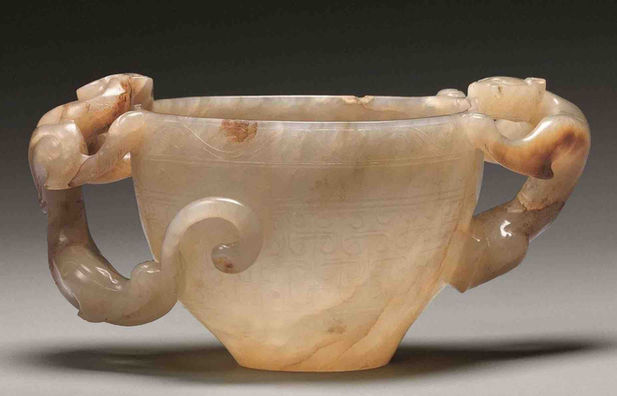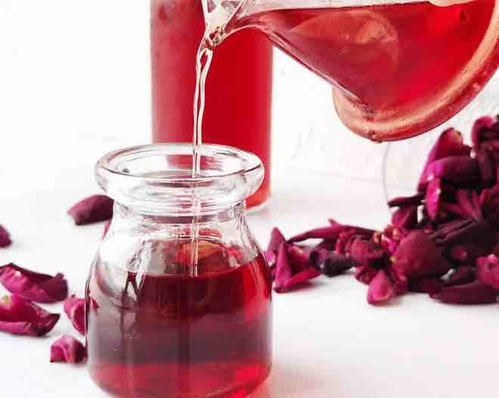Chinese Alcohol — History, Culture, Utensil, Classification, and Etiquette
Chinese alcohol is integral to worship, sacrificial ceremonies, big events, and feasts.
It constitutes an entire culture that encompasses its origins, sages, art, utensils, functions, and classifications.

Lacquer Wine Cup (Er Bei) of the Han Dynasty — Hunan Museum (Photo by Dongmaiying)
History of Chinese Alcohol
In the Xia Dynasty (2070 BC — 1600 BC), using grains to make alcohol, also called millet wine, was popular.
During this period, nobles used Jue, a type of exquisite bronze ware, to place alcohol in sacrificial ceremonies and to drink it on important occasions.

Bronze Wine Cup (Jue) Unearthed from Erlitou, Believed the Relic Site of Part of the Xia Dynasty — Luoyang Museum (Photo by Dongmaiying)
In the Shang Dynasty (1600 BC — 1046 BC), agriculture and alcohol-making skills further developed.

Chinese Character of Alcohol (on Right Side), on Unearthed Oracle of the Shang Dynasty.
When more types of grains were applied in the alcohol-making process, the ruling class tried to limit its production, save money and foodstuff, and avoid the chaos caused by over-drinking.
However, the alcohol industry kept developing in types and making techniques.

Bottle and Alcohol of the Warring States Period (403 BC — 221 BC), Unearthed from Tomb of King of Zhongshan — Hebei Museum
After Zhang Qian (164 BC — 114 BC) opened up the Silk Road and introduced grapes, grape wine became an important type.
Gradually, alcoholic drinks became popularized on civilians' dining tables and used to cure disease or relieve pain.
About 1800 years ago, the limitation of alcohol production was finally removed.
When people could freely produce, sell, and drink alcohol as much as they wanted, the industry became prosperous.

Part of Painting (Wen Hui Tu) by Emperor Zhao Ji (1082 — 1135), Presenting the Feast of Intelligent Scholars — Taipei Palace Museum
Afterward, drinking is connected to nearly all important occasions, events, and holidays in Chinese culture.
Sage of Alcohol in Chinese Culture
Yi Di, an official of Yu the Great, is believed to have invented, organized, and developed alcohol-making technology.
Du Kang, also named Shao Kang, is the most famous, well-acknowledged Sage of alcohol in Chinese Culture who invented alcohol using sorghum.
He was an official of the Yellow Emperor, or, in other historical documentation, a king of the Xia Dynasty (2070 BC — 1600 BC).

Sage of Alcohol Du Kang, Picture from Snow Fish.
Alcohol Utensils in History, Photo by Dongmaiying.
Main Functions of Alcoholic Drinks
Nowadays, alcohol is an important part of big ceremonies to celebrate happiness, forget sadness, and boost courage.
It was also widely used for medical purposes, such as disinfecting and curing diseases.

Gilding Copper Wine Cup (Er Bei) and Its Shelf of the Han Dynasty — Nelson-Atkins Museum of Art (Photo by Dongmaiying)
Situations Where Alcohol Consumption is Not Suitable
It is believed unhealthy for people to drink alcohol:
-
When someone is having bad emotions, such as being too sad or angry;
-
When physically uncomfortable;
-
With an empty or too-full stomach.
Important Elements in Chinese Alcohol Culture
Companion
Generally, drinking with family and good friends, people with noble morals, and loved ones.
Environment
Alcohol should be appreciated in beautiful and elegant places.
Spring in a pavilion, summer in the countryside, autumn on a boat, winter in the house, or nighttime under the moon.

Painting "Lan Ting Xiu Xi" by Wen Huiming (1470 - 1559), Presents An Ancient Way for People to Drink from Cups that are Floating in River — Palace Museum
Content
People would play wager games, have intelligent or close conversations while drinking, or write poems.
Many brilliant poems and articles in Chinese history were created when authors were drinking.

Ivory Carved Cards Used in Drinker's Wager Games of the Qing Dynasty (1636 — 1912) — Shenyang Palace Museum (Photo by Dongmaiying)
Main Classifications of Traditional Chinese Alcoholic Drinks
Fruit Wine, or Guojiu
Millet Wine, or Rice Wine, or Huangjiu

Flower Wine
Liquor, or Baijiu, highly distilled spirit.

Herbal Wine, or Yaojiu

Chinese Cooking Wine
When cooking, especially meat dishes, people like to add alcohol to eliminate smelly odors, such as fishy smells.
In old times, Rice Wine and Liquor were frequently used.
Nowadays, Liaojiu, a type of alcohol specifically for cooking, is widely accepted.
It is made by adding some spices and flavorings to low-alcoholic Rice Wine.
Basic Table Manners and Toast Etiquette
Today, the role of alcohol continues to hold significance in the fabric of almost every festival and social activity in China.
Its enduring importance extends beyond mere libation, evolving into a nuanced and essential means of socializing.
The tradition of raising a toast, steeped in cultural etiquette, serves as a pivotal aspect of interpersonal connections, fostering camaraderie and shared moments of celebration.
Understanding the fundamental table manners and toast etiquette associated with Chinese alcohol culture becomes an integral part of navigating these communal experiences, enriching the tapestry of social interactions and festive gatherings.

Part of Painting (Wen Hui Tu) by Emperor Zhao Ji (1082 — 1135), Presenting the Feast of Intelligent Scholars — Taipei Palace Museum
Table Manner for Drinking
Generally speaking, the seating position is not as strict as it used to be in ancient China.
However, if there are older people, leaders, or very important guests, people still follow the Seat Rules.
People need to pour alcohol for elders, leaders, or important guests when their cups are nearly empty; one should refill for themselves after everyone else's cup is full.
Toasting Etiquette
When toasting to others, people usually put their cups slightly lower than others, unless to peers or younger ones.
Many could toast to one person, but a person usually could not toast to more than one person at a time, except for the oldest and the most important guest.
Toasting Order is important as well.
-
Firstly, the host would toast to elders, as well as to leaders, or the most special guest, and then followed by other guests.
-
Afterward, others could start toasting each other.
-
The toast proceeds clockwise if no one is older or with higher ranks.
In Chinese culture, it is suggested that one always says something nice while toasting and always uses two hands to hold the wineglass.
If an elder or important guest or leader toasts to you, one should stand up and say thanks.
You Might Also Like:
Diverse and Traditional Chinese Drinks
Exquisite Dessert in Chinese Food Culture
Origin, Classification, and Culture of Chinese Tea
Daily Etiquette and Table Manners in the Tradition of China
Chinese Food Culture — Fun Facts, History, Development, and Etiquette
Chinese Dishes — History, Development, Culture, Names, and Facts
Chinese Cuisines — Origin, Classification, Tradition, Culture, and Fact
Shandong/Lu Cuisine — Representative of Northern Chinese Food Culture
Jiangsu/Su Cuisine — Sweet, Fresh Series of the Royals
Anhui/Hui Cuisine — Natural, Tasty Series that Disseminated by Diligent Merchants
Fujian/Min Cuisine — Series of Multi-ethnic, Fresh Seafood and Regional Vegetables
Zhejiang/Zhe Cuisine — Delicate Series with Close Connections to History & Culture
Sichuan/Chuan Cuisine — Popular, Spicy Series with Affluent Flavors
Cantonese/Yue Cuisine — Exquisite Series that Preserves the Primary Flavor
Hunan/Xiang Cuisine — Spicy, Sour Series For People Living in Moist Climate























